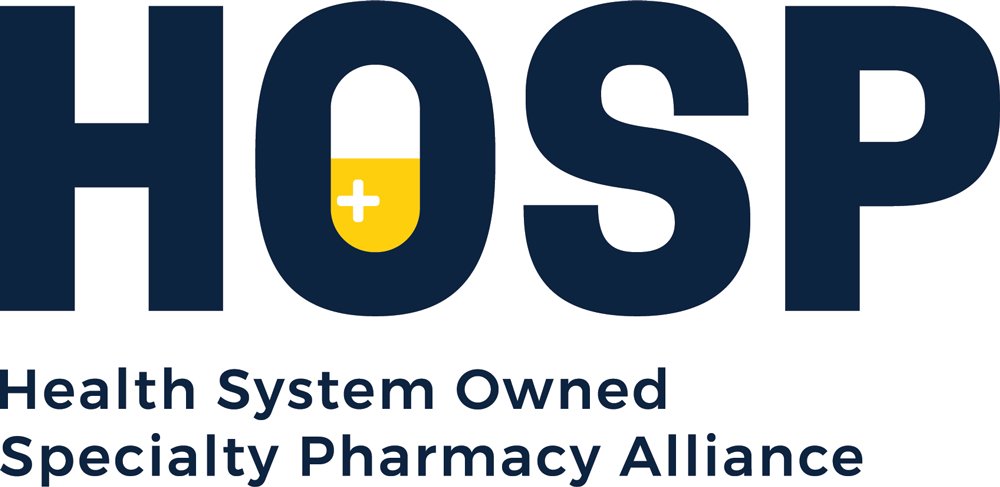Specialty Pharmacies in New York State Making a Difference by Establishing, Expanding, and Protecting a Vital Pillar of Patient-Centered Care
BY HOSP
Health systems nationwide have continued to push ahead in their coordinated care efforts with the goal of achieving the best patient outcomes. One way that health systems can better integrate care is by establishing their own onsite specialty pharmacies to serve their own patients directly, rather than a fragmented approach of outsourced pharmacy care.
Specialty pharmacies have proven to be a very effective piece of the coordinated care mechanism, especially for vulnerable patients with complex and chronic illnesses.[3] As of 2019, about 75% of major hospitals in the U.S. (defined as those with more than 600 beds), house and maintain their own specialty pharmacy. [4] Because of the mix of populations they serve, many of the systems are also covered entities under the 340B program. The 340B program is a highly successful government program that allows certain health systems and other covered entities to help get more resources to more patients, which hospitals believe results in better patient outcomes and provides an important measure of health equity for many of the most vulnerable segments of society.
Understanding 340B Funds
The 340B Program is a federal program that is intended to spread scarce resources to optimize patient care. When working with 340B-approved facilities, drug manufacturers are required to discount the acquisition cost of 340B eligible prescriptions. Covered entities are required to invest 340B savings to spread resources further to pay for the costs of providing a safety net to more vulnerable patients. The funds are used for such patient-supports as copay assistance, discounted drug offerings, opioid drug and other clinical service programs, housing and transportation, and servicing uninsured or underinsured patients. The end result is a program that maximizes safety net providers’ resources to improve patient outcomes.
In short, 340B saves lives.
Specialty Pharmacies Make a Difference
A recent article in Pharmacy Times states: “In 2020, spend will nearly double and specialty will represent half of all drugs spend. The market estimated to grow from $336 billion in 2018 to a predicted $475 billion to $505 billion by 2023 across developed markets.” [5]
Because of the increase in the number of patients with complex illnesses, the establishment of on-site specialty pharmacies is one way to help mitigate some of the complexity through improved patient outcomes because pharmacists and medication management is integrated onsite into a patient’s care plan. The importance of integration cannot be understated for the growing numbers of people burdened with managing HIV, cancer, rheumatoid arthritis, MS, transplants, kidney diseases, and more.
The data shows that increased coordination and clinical control of these types of complex cases that are often treated with expensive drugs results in improved outcomes and reduced costs.[6] Additionally, dashboards of retrievable and shareable metrics prove what’s working. Health system owned specialty pharmacies measure customer satisfaction, time to fill, Rx accuracy and various clinical outcomes metrics, and they can track patients by illness, adherence, and adverse events, while working in the same EMR as providers.
What If…New York Eliminates 340B Reimbursements in its Medicaid Program?
On April 4, 2020, the enacted New York state budget included a mandatory “carve-out” of its Medicaid pharmacy benefits to a fee-for-service model, including for 340B-eligible prescriptions — effectively shifting the 340B reimbursements that hospitals receive under the 340B program to state coffers. The carve-out was intended to save the state funds along with other changes to the state’s Medicaid program. The effort was spearheaded by New York State’s Medicaid Redesign Team 2 (MRT II), appointed by then-Governor Andrew Cuomo.
According to the New York State Department of Health website, the carve-out (which would move the pharmacy benefit for 4.3 million Medicaid managed care members to fee-for-service (FFS)) would also “provide the State with full visibility into prescription drug costs, centralize and leverage negotiation power, provide a single drug formulary with standardized utilization management protocols, and address the growth of the 340B program and associated reductions in State rebate revenue.” But the changes to 340B would result in grave, negative impacts on health equity and patient outcomes because health systems and other covered entities would no longer retain those savings. Instead, the 340B savings would go to the State.
A coalition of New York safety net providers, including Ryan White clinics, FQHCs, and hospitals, along with members of national organizations like the Health System Owned Specialty Pharmacy Alliance, fought hard to reverse or delay the carve-out, which would have had a devastating effect on their ability to serve the most vulnerable populations across the state.
In April 2021, the efforts paid off, at least for the short term, as the 2021 enacted state budget delayed implementation of the change until April 1, 2023. But the fight will continue for the state’s covered entities to preserve the intent of the 340B program to help serve the needs of patients in the communities that need the most care.
What’s Next?
While 340B entities were able to delay the policy change in New York, the change has yet to be fully reversed. The same group of stakeholders faces another fight in advance of the 2023 implementation date.
In the meantime, all eyes are on California, which is slated to enact a similar policy on January 1, 2022.
To learn more about specialty pharmacies or to help strengthen the voice that supports them, consider joining HOSP. Visit our membership page here.
If you’d like to voice your opinion about the carve out of 340B savings from New York from health systems and other covered entities, please contact your New York state or local representative, or Governor Hochul’s office here.
REFERENCES
